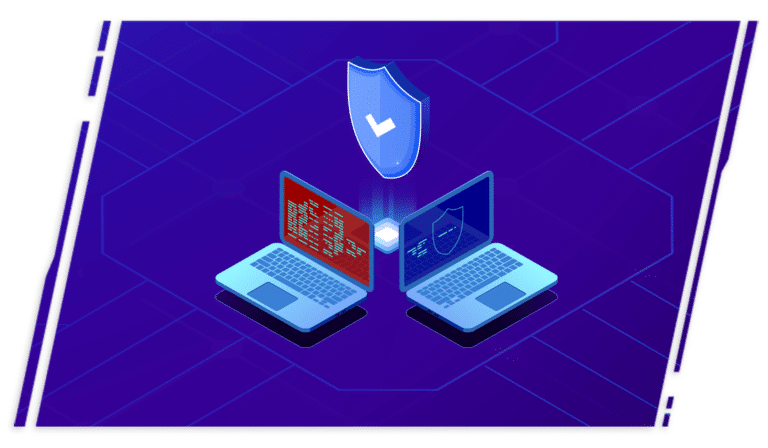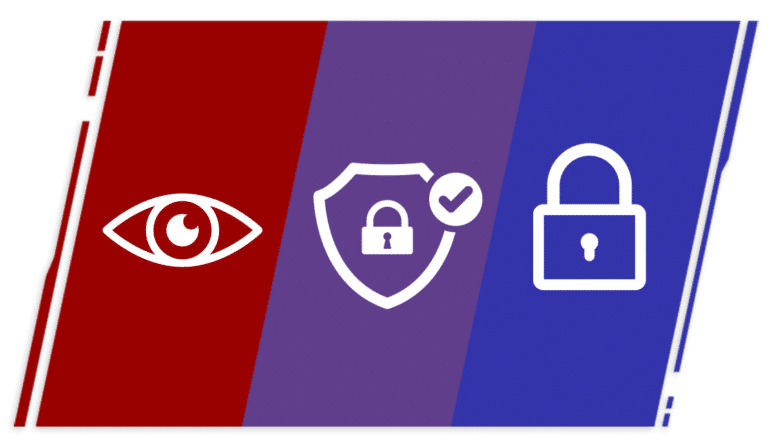
A purple team refers to the combined roles and responsibilities of both the offensive and defensive teams.
By integrating offensive (Red Team) and defensive (Blue Team) approaches into one group, it is possible to advance security measures in both prevention and detection.
Harnessing a unique team dynamic, this approach seeks to strengthen an organization’s security posture by not just testing it but refining it as well. It adjusts team culture in order to bring out everyone’s skills and collectively make a more secure system.
The Purple Team scenario offers an effective method of strengthening the safety measures of a company, which is more comprehensive than penetration testing and Red Teaming alone. This entails verifying that the Blue Team can be alerted to any breaches attempted on the organization’s network from the Red Team. Doing so leads to increased security for the organization overall.

What Does the Purple Team Do
Purple Teaming is specifically organized between the Red Team and the Blue Team to find the best way to help the Blue Team and their SIEM detect, monitor, and block the Red Team’s attempts at finding a way into the network.
During this Advanced Persistent Threat (APT) simulation, the Red Team shares all of the attempts that will be made during the simulated breach with the Blue Team. The Red Team and Blue Team work together to verify their security measures in order to assist the Blue Team in detecting these forms of attacks in a real-world scenario.
At the conclusion of the engagement, CyberMaxx will engage with technical meetings, screen sharing, and conference calls with the organization’s cybersecurity teams in order to go through tactics, techniques, and procedures (TTPs), analyze attack/detection timelines, and cross-referencing what was and was not detected during the Pen Testing Engagement.
Any gaps in detection or playbooks determined to be insufficient will be discussed and collaboratively addressed. Replays of attacks will be offered to verify any defensive changes are effective. The value of this phase is tangible as the outcome gives actionable steps and seeks to address any defensive gaps uncovered.
CyberMaxx runs a Blue Team that is specialized in providing MSSP/MDR services and is knowledgeable in on-premises and cloud defense infrastructure. By integrating the CyberMaxx Blue Team into an organization’s security team, and supplementing their knowledge with CyberMaxx’s Red Team, organizations can be confident that defenses will be tested more thoroughly than could be done with just a penetration test or a Red Team alone.

Purple Team Benefits
- SIEM Log Gap Analysis: Through simulated attacks, the purple team identifies any gaps or areas where logs are missing. The process involves simulating a real-world attack and observing how the SIEM system detects and responds to the attack.
- Improved Security Posture: A purple team identifies and closes security gaps by simulating real-world attacks and evaluating the efficacy of a company’s defenses
- Enhanced Collaboration: Added benefit of the Red Team helping the Blue Team detect these attacks leveraging their existing infrastructure and making recommendations for additional configuration and/or defensive tools
- Better Use of Resources: A purple team enables organizations to maximize their security investment by reducing duplication of effort and ensuring that resources are focused on the most pressing security challenges
- Increased Preparedness: A purple team helps organizations to prepare for and respond to security incidents, reducing the likelihood of a successful attack and minimizing the impact of a breach
- Continuous Improvement: A purple team’s circular relationship between the red and blue teams enables organizations to continuously improve their security posture through regular testing and remediation.
- Threat Intelligence: A blue team’s best source of threat intel is working in conjunction with a red team in creating an information feedback loop to proactively protect organizations against threat actors.
